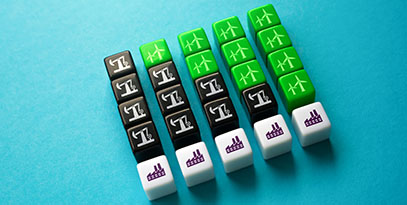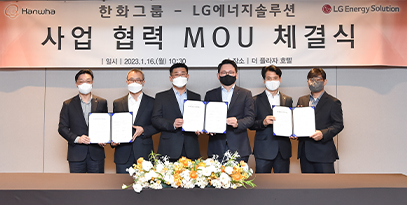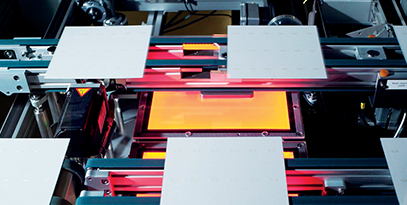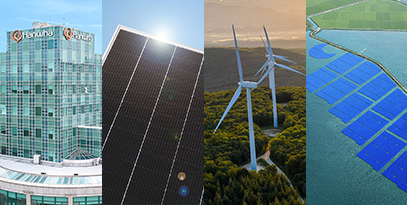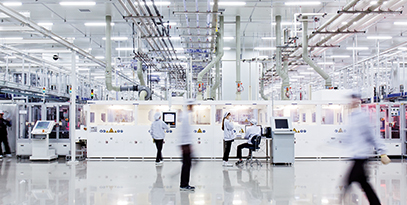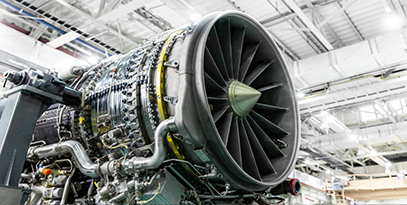Energy Storage Systems (ESS):
A Key Solution to Unlocking the Clean Energy Transition

Green energy has become a global necessity. And thanks to major energy-focused policy moves such as the United States’ Inflation Reduction Act (IRA) and the EU’s REPowerEU, the realization of a complete green energy transition draws closer every day.
Innovative green energy technology has given us smart and sustainable solutions such as solar and wind that allow us to power our lives by harnessing Earth’s renewable natural resources. But where does electricity come from when the sun doesn’t shine and the wind doesn’t blow? This is where energy storage systems (ESS) save the day.
Since some renewable energy sources, including solar and wind, produce power in a fragmented manner, ESS play a vital role in green energy infrastructure by stabilizing the electricity supply. To meet the growing demand, Hanwha is leveraging its green energy know-how to build new energy storage and smart energy management solutions that can help strengthen the green energy grid and tip the scales towards a full transition to renewable energy.
What is ESS? Energy Storage Systems Explained
The need to store energy to meet demand during times of peak usage has been around since the electrical grid was first established. In the past, the majority of this demand has been fulfilled with fossil fuels, which are themselves repositories of energy. With fossil fuel infrastructure, it is possible to simply adjust the amount of fuel being burned to meet varying supply and demand. In contrast, the energy produced from sources like wind and solar cannot be adjusted so easily. When natural resources are available, wind turbines and solar panels create energy which can be used immediately. However, the amount of energy produced by these sources does not always align with demand. So, what happens when we need energy, but the sun has already set, or the wind has died down? On the other hand, what if plenty of energy is available, but electricity demand is low?
Enter: energy storage systems. ESS are a game-changing technology that address the intermittent nature of renewable energy sources such as solar and wind by offering the ability to store the energy that they produce for later use. Without ESS, there would be nowhere to store the excess renewable-generated energy and it would simply go to waste. ESS solves this problem by providing a home for the excess electricity produced when the sun or wind are at their strongest. Another benefit of this technology is its ability to bolster grid resiliency by actively balancing the fluctuating nature of energy supply and demand, making it a great fit for both small- and large-scale applications.
There is a wide array of available energy storage solutions, including batteries, thermal, mechanical and hydrogen, with batteries being the most popular option for solar and wind energy storage. How do solar panels work with ESS, though? And what does it look like coupled with wind-generated energy? Let’s explore this process further with a real-world example.
A factory has chosen to drastically reduce its carbon footprint by installing solar panels on the roof of its facilities as well as utilizing wind turbines on the property. When the sun is brightly shining and the wind is strong, the solar panels absorb energy and the wind turbines turn, generating more than enough clean energy. All of this energy is then collected and stored in a battery energy storage system (BESS). Later, that energy is released from the batteries during times of peak electricity demand, keeping eco-friendly energy flowing at night or on still or cloudy days.
How Does an Energy Storage System Work?
A Key Component of the Green Energy Transition
A transition to renewable energy is mandatory if society is to achieve net-zero targets and slow the harmful effects of climate change. As green energy continues to gain global popularity, so does the need for smart energy storage solutions that will pace the current green energy trajectory. But as we’ve already seen, simply installing solar panels isn’t enough. A sturdy infrastructure must be in place to support and maximize the benefits of green energy sources and account for their intermittent nature. Accordingly, investment in green energy infrastructure has become a priority. But what is infrastructure’s role in the energy transition?
The World Economic Forum’s System Value Approach identifies ESS as one of the key infrastructure components for energy transformation, and their vitality is further highlighted when paired with solar energy systems. Solar panels and battery ESS (BESS) make an effective pair for powering anything from single-family homes to businesses to communities, and virtual power plants (VPP) only add to this impact. VPP work by pooling the collective power of smaller distributed energy resources, i.e., multiple solar or wind farms, to mimic that of a larger, central power plant. By aggregating multiple distributed energy resource-containing ESS together, VPP provide the grid with added stability and resiliency.
ESS not only provide answers for stabilizing the solar energy supply, they also lower energy costs. When combined with traditional power systems, ESS allow users to store low-cost energy to consume during high-demand periods when electricity rates are typically higher. Shifting to ESS for energy consumption during these times avoids these higher charges, passing savings onto the user. Savings are further magnified when solar energy is the sole source of electricity.
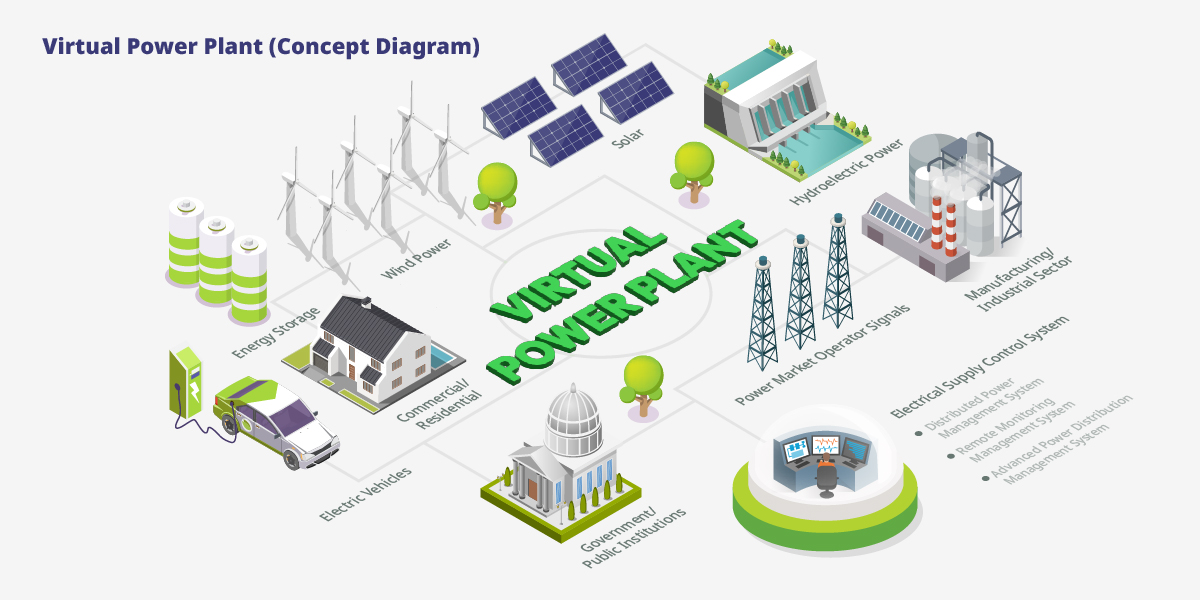
Virtual Power Plants aggregate multiple distributed energy resource-containing ESS together to provide added stability and resiliency to the electric grid.
ESS Solutions for Every Space
Energy storage systems can be used in a wide range of applications, from something as small as a single battery to systems capable of powering entire towns. These days, the most common types of ESS are large-scale utility and home. Hanwha is hard at work delivering solutions in both segments to meet the growing demand for comprehensive green energy infrastructure.
Large-scale utility ESS are developed to power multiple homes and buildings through regional or even national power grids. Hanwha is no stranger in this segment and has continuously sought further opportunities to grow its global impact in the green energy sphere. For example, Hanwha Energy recently held a ground-breaking ceremony for Shannonbridge B, its third ESS project in Ireland. The company will also collaborate with Lumcloon Energy, an Irish project development company focused on power and energy assets, to establish a hybrid facility that will be capable of providing an additional 160 megawatt-hours of hybrid capacity to the national electricity grid and assist with the country’s renewable energy supply. The 122.5 million USD project is set to provide power-grid-stabilization services to Ireland’s electricity grid operator, EirGrid, and is expected to help the country achieve its goal of carbon neutrality by 2050.
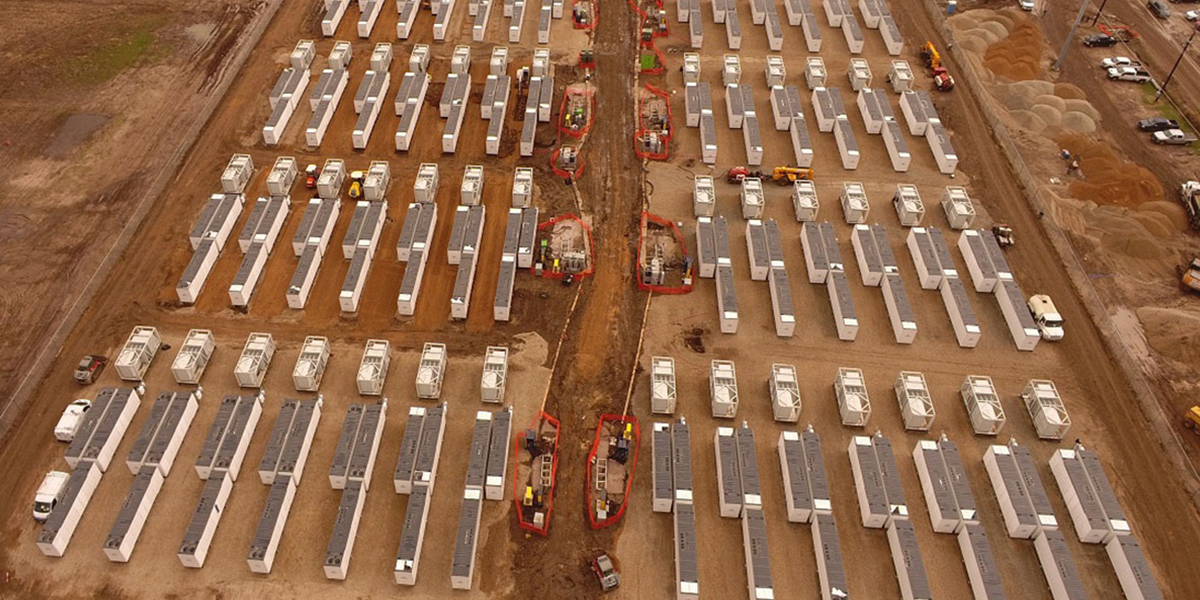
The Cunningham ESS Project Site in Texas
On the other side of the Atlantic Ocean, Hanwha is hard at work building out a host of large-scale ESS projects in the U.S. Hanwha Energy has won several ESS projects across the country, including the Astoria Project, a 400-megawatt-hour ESS in New York, and the Silver Pick Project, a 240-megawatt-hour ESS in Nevada. Hanwha was also selected to deliver a 79-megawatt-hour solar plant along with a 240-megawatt-hour ESS for Kupehau Solar Project managed by Hawaiian Electric Company (HECO) in Hawaii. Additionally, Hanwha Solutions Qcells Division (Hanwha Qcells) acquired the Sputnik Energy Storage development project in Texas, one of the state’s largest operating battery storage projects. In another major step forward, Hanwha recently announced that three of its subsidiaries, Hanwha Qcells, Hanwha Corporation/Momentum and Hanwha Aerospace, signed an MOU with LG Energy Solution (LGES) for comprehensive battery cooperation and ESS. This joint investment is expected to bolster the U.S. market’s battery supply resiliency amongst the growing demand for domestically produced ESS following the passage of the IRA.
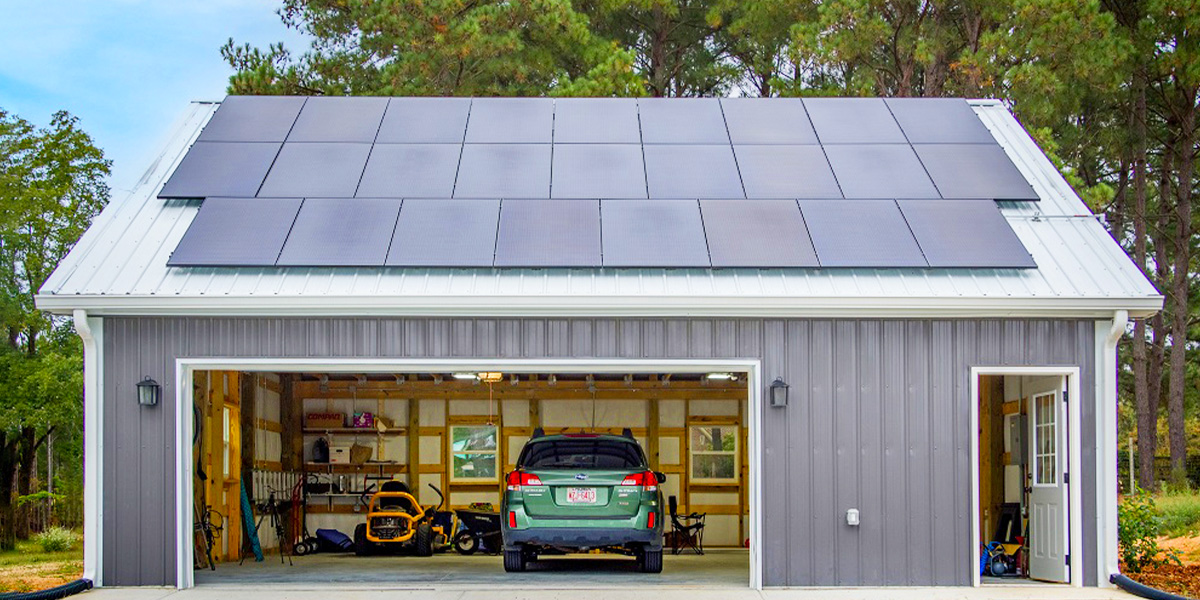
Solar Panel Modules for Household Use (U.S., North Carolina)
Residential solar power installations in the U.S. rose 34% in 2021, and with new legislation providing a 30% solar tax credit, this solar shift is only expected to grow. Accordingly, the demand for energy storage systems is steadily increasing as more and more households look to solar to reduce electricity costs, lessen their carbon footprint and provide their energy needs.
Home ESS utilize the same framework as large systems, just on a smaller scale. Hanwha Qcells’ suite of home ESS products provides scalable solutions for optimized energy consumption to suit the needs of all households. The Q.HOME CORE integrated solar inverter and storage systems strike the perfect balance between performance and design. These total energy solutions each boast a modular and scalable Q.SAVE battery and a high-performance Q.VOLT inverter. Hanwha Qcells’ Q.HOME+ ESS HYB-G1 energy storage solution is also scalable, with a storage capacity ranging from 4.5 to 18.9 kilowatt-hours. The system has an integrated backup power function for 100% of the rated inverter output to support critical loads in the event of a power failure and can be monitored using the Q.HOME+ web portal or Q.HOME+ ESS mobile app. Its modular design makes for a fast and easy installation without sacrificing quality or reliability.
How Does a Home Energy Storage System Work?
Energy Management Systems (EMS)
It’s been established that ESS holds great importance in the context of energy security and the clean energy transition as a whole. But there’s another crucial piece of energy technology that helps maximize the functionality of ESS — energy management systems (EMS). EMS are a type of software that allows users to control and regulate the energy flow between renewable power sources, ESS, and their home appliances. EMS collect energy data and measurements that are then made available to users through graphics, online monitoring tools and energy quality analyzers. Users can then draw from this data and access smart systems to manage their energy resources.
Homeowners can tap into a comprehensive energy management solution with Hanwha Qcells’ Q.OMMAND system. This mobile app enables customers to optimize their power consumption by controlling the systems in their homes run by clean energy. Q.OMMAND provides the best way to consume electricity with real-time monitoring and daily, monthly, and year-to-year analysis.
How Does a Home Energy Management System Work?
Hanwha is also making moves that will enhance software capabilities for EMS and further decarbonization efforts. In November 2021, Hanwha Solutions made a 100 million USD investment in Lancium Technologies, a Texas-based, green-energy-focused data center power management company, to build the company’s IT-based power management expertise. Previously, Hanwha Qcells acquired Growing Energy Labs, Inc. (GELi) to secure VPP business capabilities, another method of regulating the supply of electricity generated by clean energy sources with demand. With these moves, Hanwha is accelerating the energy transition with technologies that encourage more clean energy production while supporting the infrastructure required to make its implementation successful.
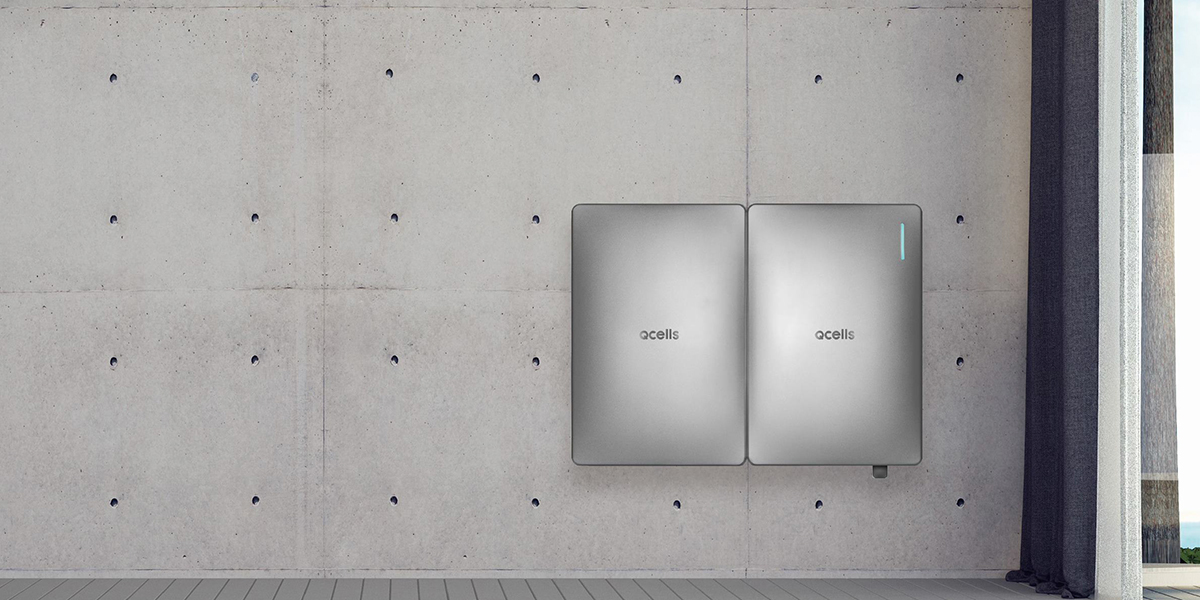
Q.HOME CORE Home ESS
Smart Energy Storage Solutions for a More Sustainable Future
Renewable energy sources continue to be the focus of energy development as we steadily march towards the realization of net-zero targets. From living rooms to large-scale projects, energy storage systems remain of critical importance in this transition. Hanwha is proud to be a leader in this realm, pursuing an expanding portfolio of ESS and EMS solutions. As a company standing firm in its commitment to a sustainable future, Hanwha will never cease to pursue opportunities to create bold innovations and a brighter future for all.


